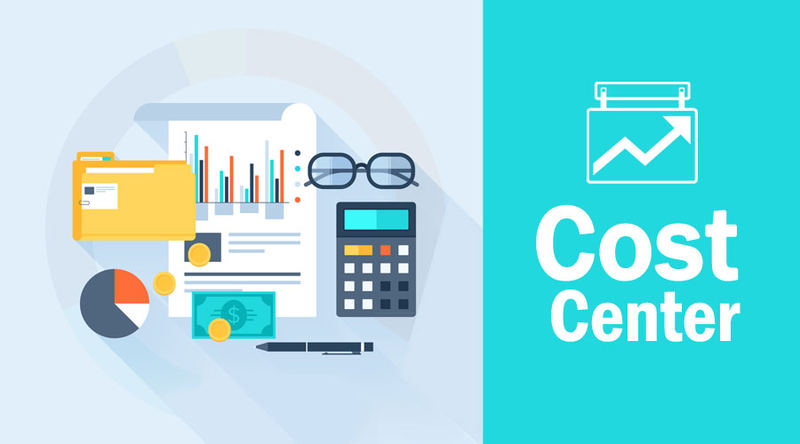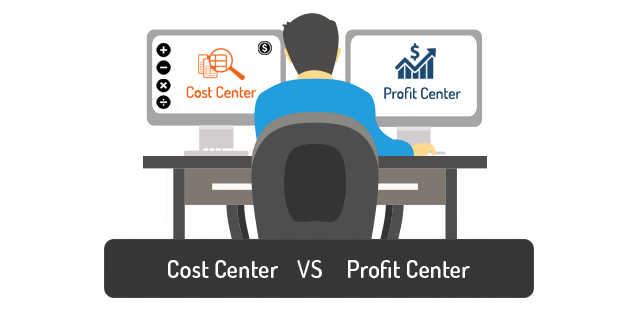As a business owner, your focus is likely centered on making money. But as important as it is to produce revenue, there are expenses involved in running your business as well. A cost center is an employee or a department within your company that performs those expense-bearing, necessary tasks.
For example, if you have an HR department or even a single HR employee, they would be considered a cost center. Cost centers provide support to the business in some manner. Cost centers do not generate revenue but incur expenses, which directly affects both cash flow and your income statement.

Overview: What is a cost center?
Cost centers are an important function for any business. Even a small business can benefit from a cost center. A cost center can be a single person, such as the accounting clerk responsible for entering transactions into your accounting software application, or it could be an entire human resources department. Cost centers provide administrative and other support to revenue-generating activities.
Cost center activities are always included on your company’s balance sheet. While a cost center contributes no revenue to a balance sheet, it has both assets and liabilities.
Cost center vs. profit center: What’s the difference?
A cost center indirectly contributes to business profit, while profit centers exist to earn revenue. For example, the patient relations center at a large hospital would be considered a cost center, since its purpose is to maintain good relationships with patients. While this is an important task that can indirectly increase revenue by keeping patients happy, the patient relations center does not earn a profit.
However, the elective surgery department at that same hospital provides elective surgical procedures to patients and would be considered a profit center, since it earns revenue. Larger businesses and other organizations may also use a revenue center to manage sales revenue.

For example, let’s look at Debra’s Department Store. Debra prides herself on her well-stocked shelves of quality merchandise. Many years ago, Debra’s Department Store began as a small, local hardware store, but as Debra added different departments, her revenue grew. Now she has 10 profit centers which include clothing, electronics, furniture, drugs, and home goods, along with several others.
But in order to keep her business running smoothly, Debra has established several cost centers including a customer service center that handles returns, exchanges, and customer concerns and complaints. She has also built an IT department that is tasked with ensuring that all of the store’s computers run smoothly.
While neither the customer service department nor the IT department generates any revenue, they provide a valuable service both internally, by keeping computers running smoothly, and externally, by keeping customers happy and helping to solve any problems or concerns that may arise.
4 benefits of cost centers
In most larger businesses, cost centers are a necessity, providing added value to a business. While they’re not designed to make a profit, they do enhance the profitability of a company by providing these benefits.
1. They create happier customers
If you sell goods and services (and what business doesn’t), keeping your customers happy is essential. No, not just essential — it’s also a full-time job, which is why creating a customer service department is a worthy investment for your business.
Even though your customer service department costs money rather than makes money, it also settles disputes, solves problems, and essentially keeps your customers happy. And a happy customer is usually a loyal customer.
2. They keep the business running smoothly
While you sell goods and services, who’s behind the scenes ensuring your machines are kept clean so they perform optimally? Who makes sure that Tom’s spilled coffee is wiped up, the garbage cans are emptied, and the air conditioning and heating is working properly?
Your maintenance staff, that’s who. While the machine operators and order fulfillment people are vital to your business, so are the people who make it easier for them to perform their jobs.
3. They manage your employees
When you started, you wore many hats. Maybe you still do. But as your business grows, you know you can’t continue to effectively manage all areas of your business, particularly HR and payroll.
HR and payroll cost centers manage the entire hiring process from initial job posting to reading applications and resumes, to managing the entire interview process. They also manage employee disputes, investigate complaints, and ensure your business complies with state and federal laws.
4. They look for innovative opportunities
Let’s not forget the importance of finance and accounting. While this cost center may handle revenue, it also handles financial statement analysis, serves as a resource costing area, and handles taxes. A good finance and accounting department also assesses sales trends, reviews different pricing strategies, and reviews changes in the industry.
Your finance and accounting staff may also pinpoint new areas for your business to explore or determine what products and services are least and most profitable.
How a cost center works
Cost centers must be mindful of organization expenses, while still providing the necessary support services. A cost center, such as a production or profit center, has a budget that needs to be managed.
Because the costs incurred by cost centers are internal and used to make management decisions, cost centers use managerial accounting to track data. Usually, when layoffs occur, they begin in the cost centers, as these positions are not revenue generators.
Example of a cost center
Going back to Debra’s Department Store, Debra has an accounting staff of four: a senior accountant and three clerks. They perform these tasks.
• Accounts payable: One of the accounting clerks handles all accounts payable transactions, ensuring bills are entered properly and paid promptly.
• Accounts receivable: Another clerk handles all accounts receivable for the business, including posting customer payments, following up with customers on payment status, and beginning the collection process for late payments.
• General accounting tasks: Debra’s senior accounting clerk handles more advanced accounting tasks such as recording depreciation expenses, managing payroll and related tax expenses, and posting adjusting entries.
• Financial analysis: Debra’s accountant runs and analyzes financial statements, helping the company pinpoint areas that need improvement and identifying different ways they can increase revenue.
While none of these tasks generates revenue, they are all essential to the health and well-being of Debra’s business. If bills aren’t paid on time, Debra’s credit rating could drop, affecting her ability to purchase goods for resellers. If payments aren’t properly credited to a customer’s account, there could be serious repercussions.
The same goes for prompt follow-up of any late-paying accounts. Payroll must be processed when it’s due, taxes must be paid, and company performance must be regularly analyzed to keep expenses to a minimum while maximizing revenue. That’s why the accounting and finance cost center is so important to Debra’s business.
Cost centers can help you manage your business
As your business grows, the bookkeeping process necessary for your small business will also grow. When growth does occur, you may want to create and manage various cost centers. While serving as an effective management method, cost centers can help you better track business performance and related expenses, and if managed properly, can also help your business grow.
The post What Is a Cost Center and Why Are They Important to Your Business? appeared first on The blueprint and is written by Mary Girsch-Bock
Original source: The blueprint






